Deer resistant plants – 20 flowers and shrubs that deer hate
Discover an array of beautiful, deer resistant plants to keep your garden safe from local wildlife
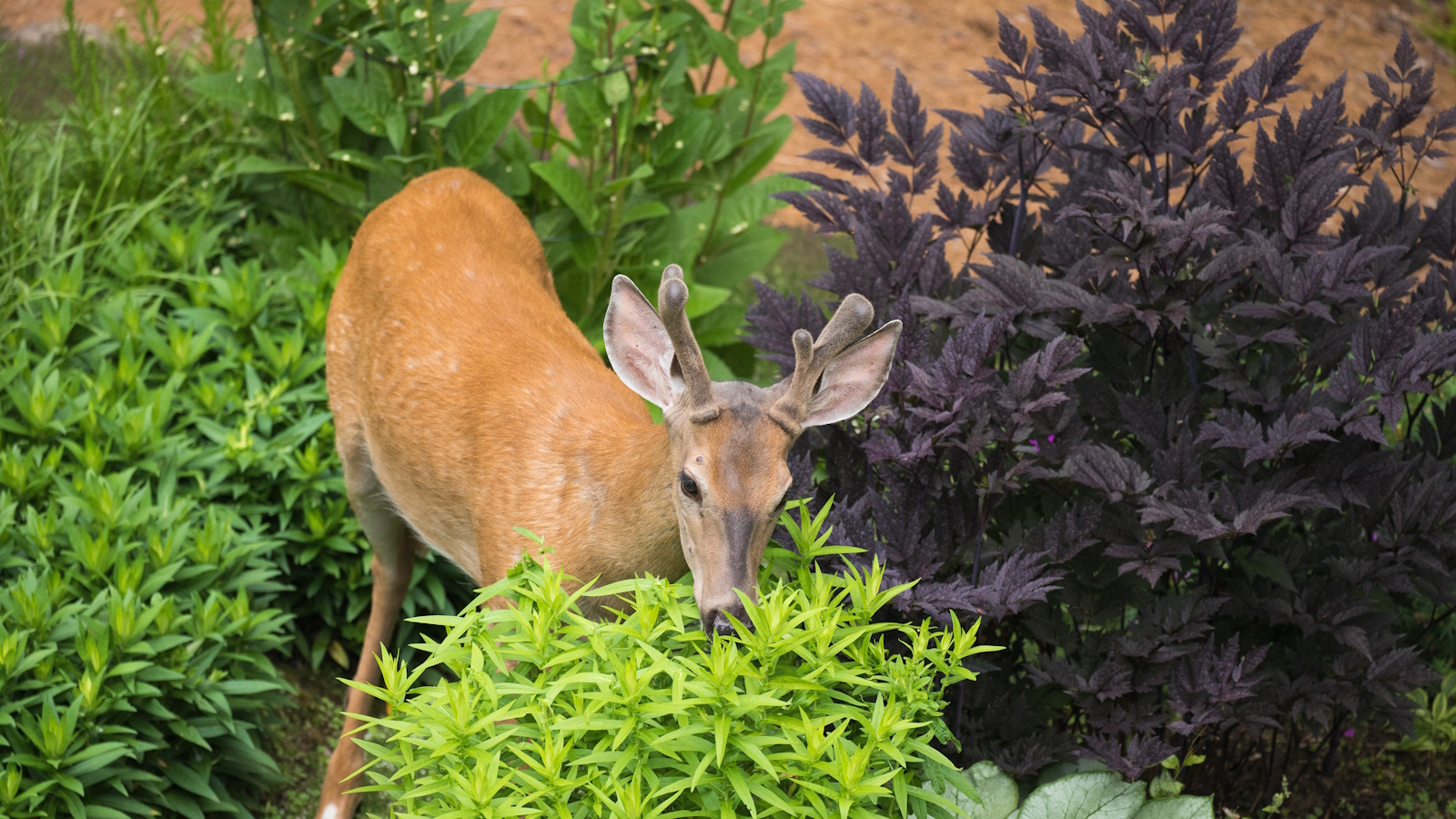

Rachel Bull
If deer are prevalent in your area, then deer resistant plants are an essential addition to your yard. While deer are shy animals, when hungry they will often stray into gardens and eat prized plants – putting a huge dent in your carefully curated borders.
While it might be challenging to create a completely deer-proof garden, there is a wide variety of deer resistant plants available to help deter them and minimize any damage. It will be useful to consider how hardy your plants are, and whether they will easily recover from a deer munching session, as Jo Ellen Meyers-Sharp, creator of Hoosiergardener, and a member of the National Garden Bureau, explains: ‘One thing to keep in mind is that if the deer are hungry, they will eat just about anything. So even though a plant may be considered deer resistant, it may still be targeted.’
Whether you are looking for evergreen shrubs to serve as the backbone of your backyard ideas, or annuals to fill in gaps in pots and borders, there are so many wonderful deer resistant plants and flowers to choose from. We asked the experts for their top picks.
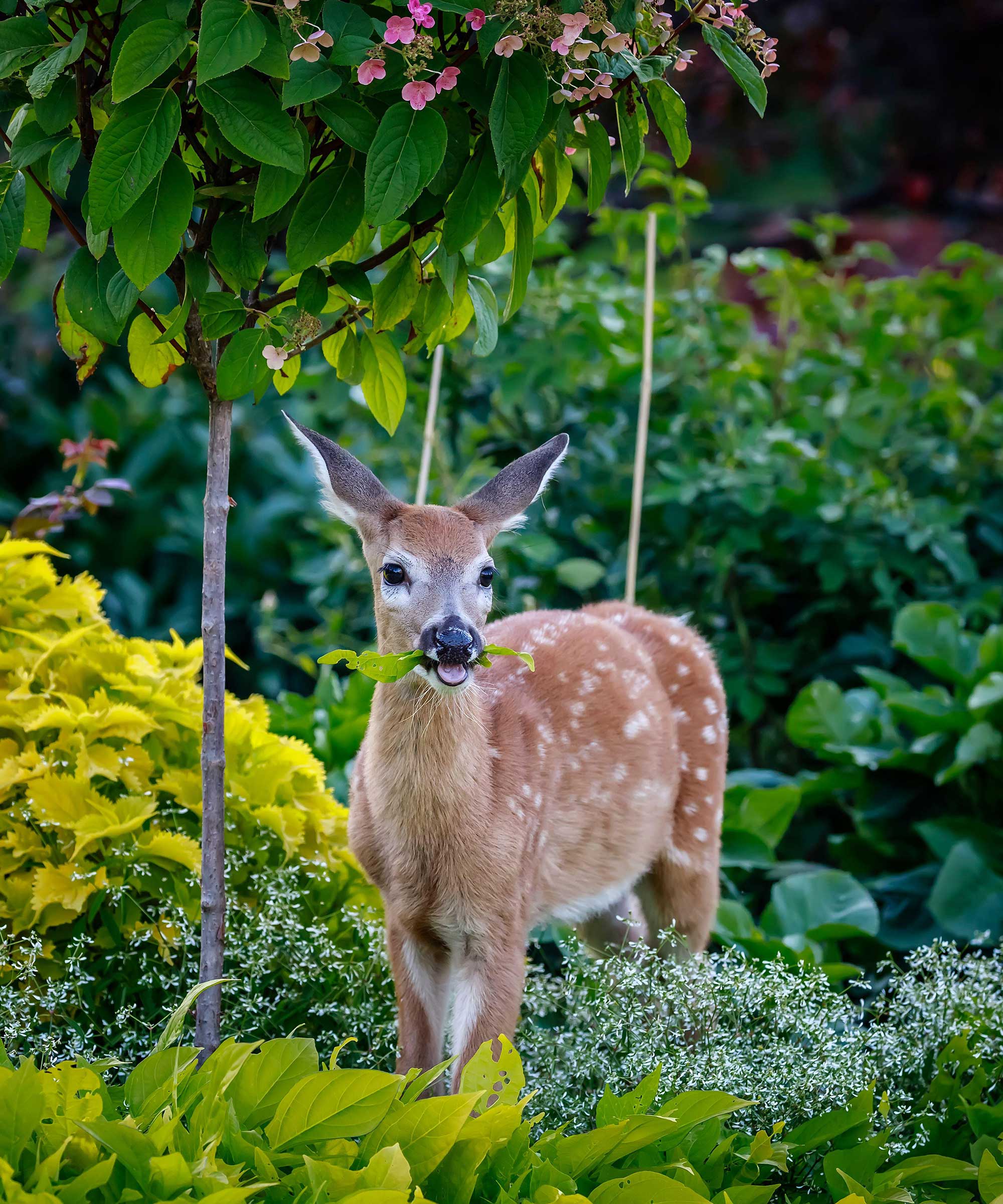
Deer resistant shrubs
Shrubs provide much of the structure and interest in our gardens year round. Many are evergreen, adding color and interest in every season. However, they are also at great risk of getting chomped on by deer, who enjoy leafy shrubs and trees. Their favorites include pittosporum and euonymus, and even flowering shrubs such as rhododendron. These ones, however, they are more likely to stay away from.
1. Panicle hydrangea
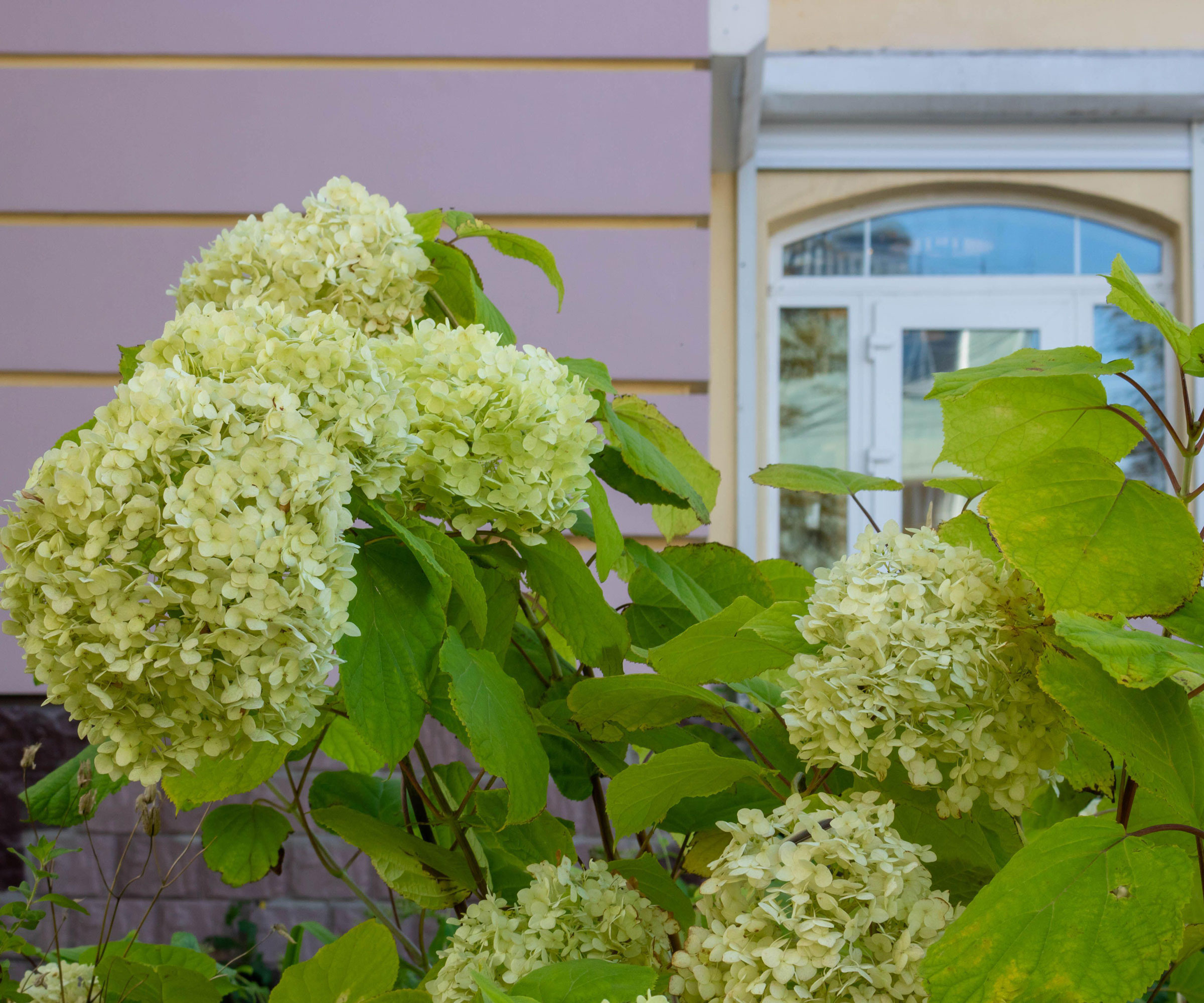
Panicle hydrangeas – or Hydrangea paniculata – are moderately fast-growing shrubs that are not favored by deer once they have had a few years of growth.
They flower on old wood, so are less likely to be eaten by deer than the hydrangea types that flowers on new, fresh growth. Once established they are also fairly hardy, so even if deer do try to have a munch, the plants should recover well.
Panicle hydrangeas have flowers in the white to pink to light red range. They bloom during the summer months and the flowers last through fall, typically fading to a handsome light tan as temperatures drop before winter.
Make sure you know how to grow hydrangeas to get the best out of them. They thrive in USDA zones 3-9, and the popular 'limelight' variety is available at Nature Hills.
2. Osmanthus
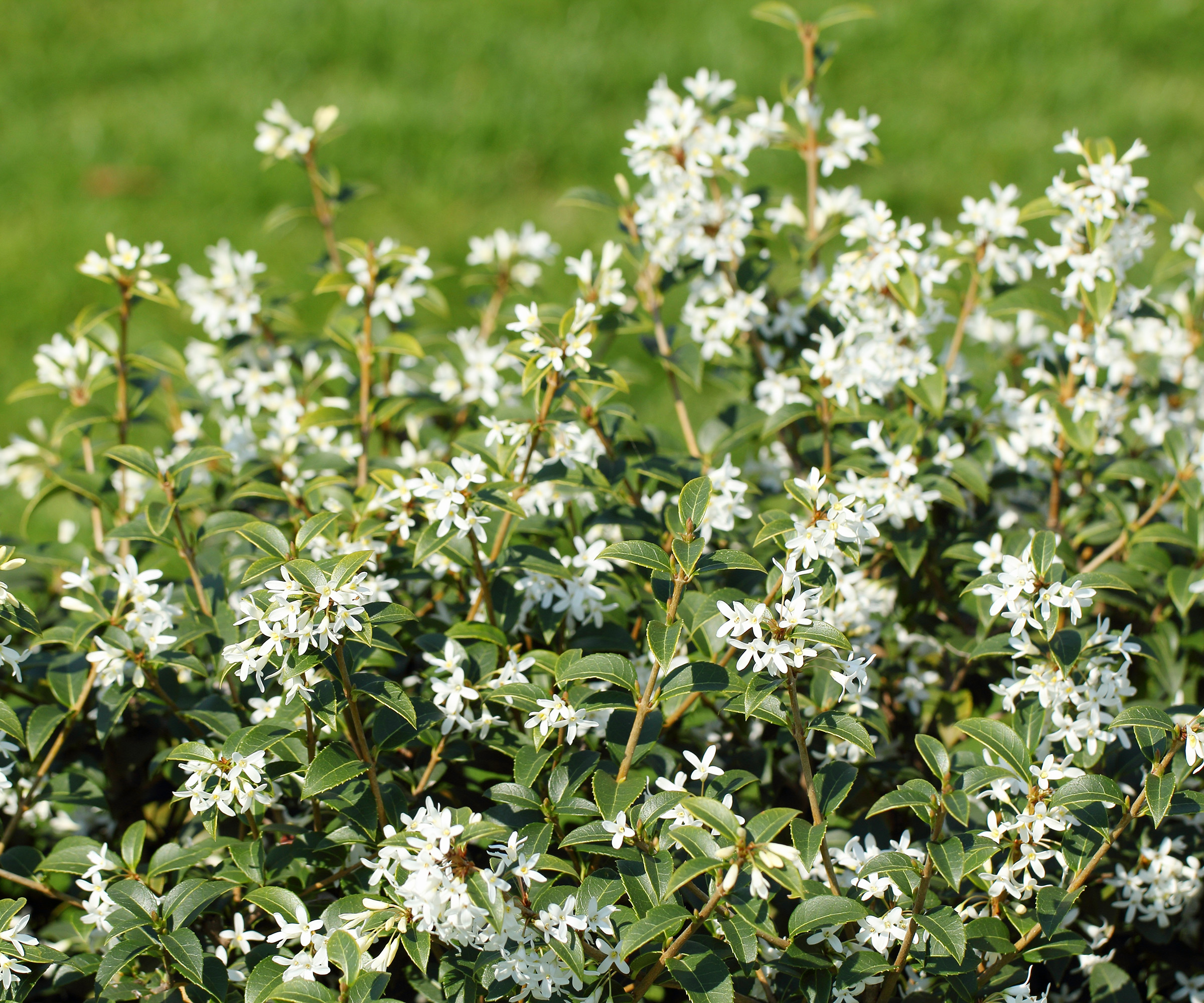
Osmanthus, also known as devil wood, produces a cluster of tiny white flowers that emit a sweet fragrance similar to magnolias and gardenias. Its scent and the plant’s spiny leaves make it unappealing to deer.
‘Osmanthus is an easy-to-grow shrub that can tolerate many different soils and light levels. It is often used for hedging and privacy screens,’ says Michael Giannelli of East Hampton Gardens.
You can grow osmanthus in USDA zones 7-10.

Michael Giannelli is the owner of East Hampton Gardens. He purchased the gardens in 2017, bringing with him 30 years of experience in retail design, deep ties in the Hamptons design community, and a lifelong passion for gardening.
3. Lavender
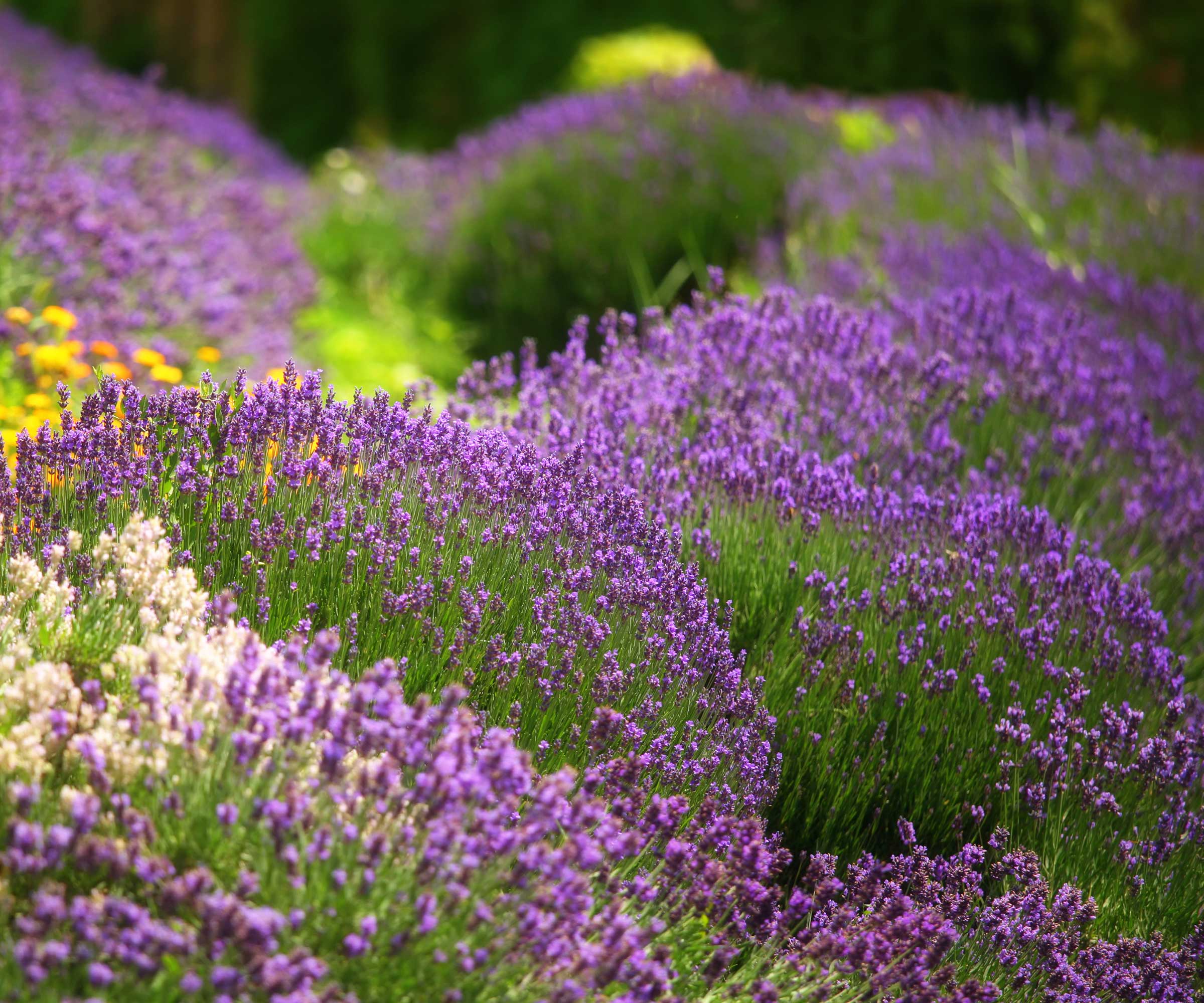
Lavender’s scent may be heavenly to us, but deer dislike it, making it an ideal shrub for your garden. Lavender grows best in well-drained soil with full sun exposure, and is super hardy.
It does not require a lot of maintenance, but can sometimes be susceptible to pests like aphids and rosemary beetles. Learning how to grow lavender is easy for gardeners in most climates, however the plant dislikes humidity. Expect to be able to grow it in USDA zones 5a to 9a.
French lavender shrubs are available from Nature Hills.
4. Ninebark
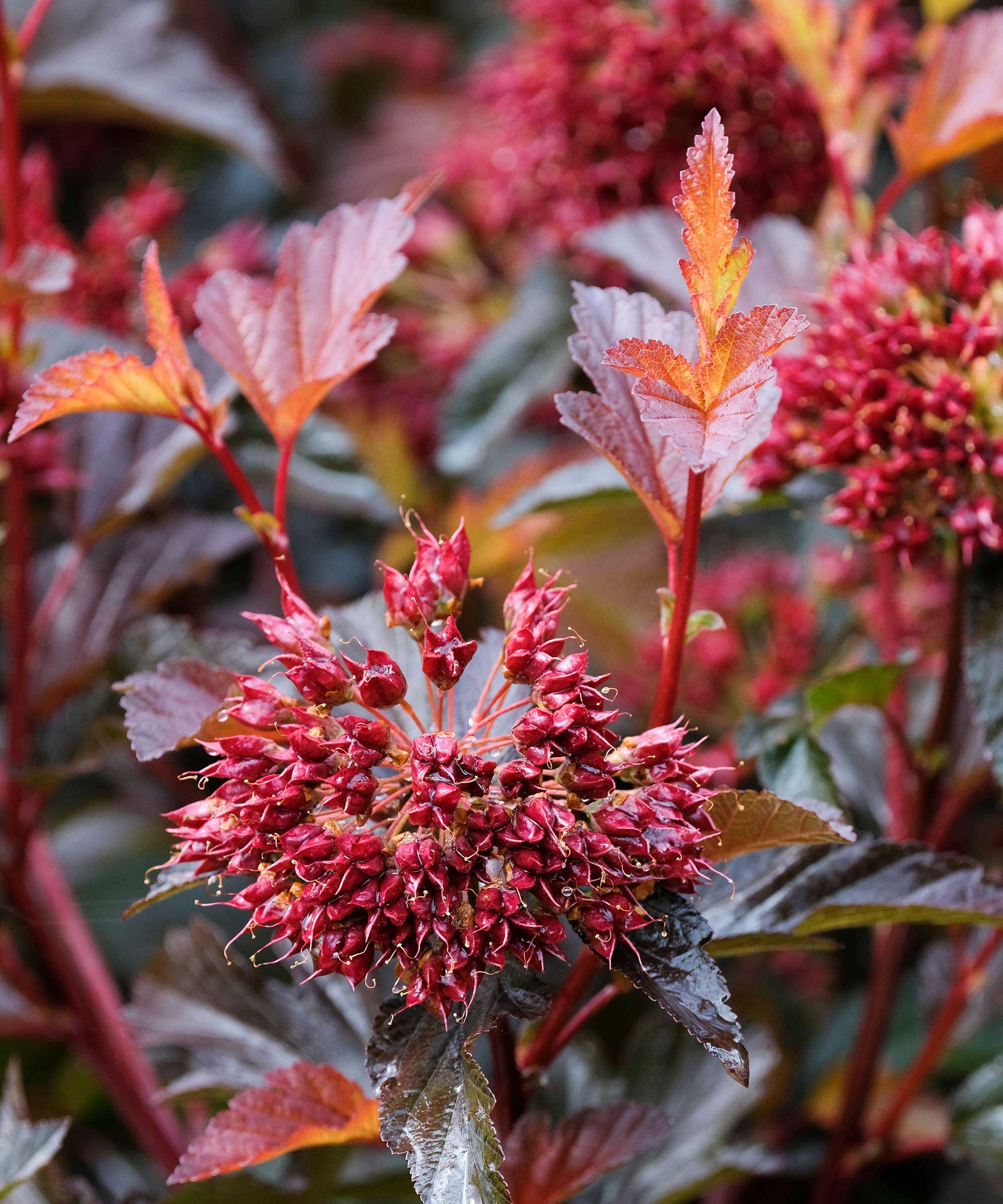
Ninebark – or Physocarpus opulifolius – is a fast-growing, medium to large shrub that typically produces frothy white flowers in late spring and early summer.
Deer avoid them because they typically hate the texture of woody shrubs - they can't stand anything thorny or fuzzy.
Ninebark comes in foliage colors of bronze-red, burgundy, purple, chartreuse, and a few others. These shrubs are happiest planted in full sun but can tolerate a few hours of shade a day.
Ninebark is also a great choice for colder climates, and can be planted in USDA zones 2-7.
5. Japanese andromeda
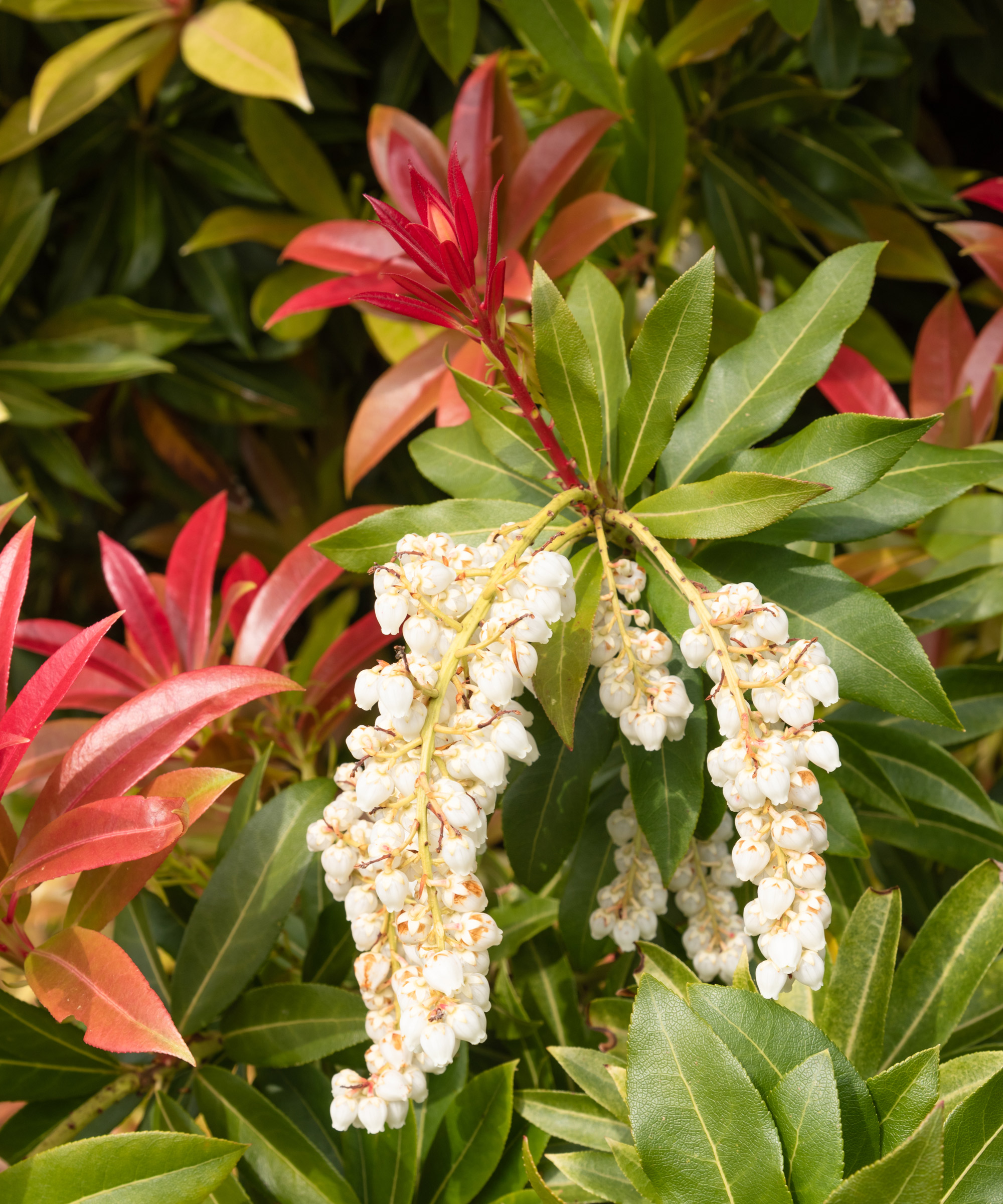
Japanese andromeda – or Pieris japonica – has a distinctive scent that some gardeners like and others avoid. However, it smells particularly unpleasant to deer.
‘Andromeda is sometimes referred to as the lily of the valley plant as its early spring flowers look similar,’ says Michael Giannelli. ‘It is a great evergreen shrub that changes color as the season progresses, setting long clusters of buds in fall for great winter interest.’
However, bear in mind that andromeda are fussy about soil type. ’They need very well-drained acidic soil,’ adds Giannelli. If your soil is more alkaline, then the best thing to do is to grow them in containers. They should thrive in USDA zones 5-8.
6. Red twig dogwood
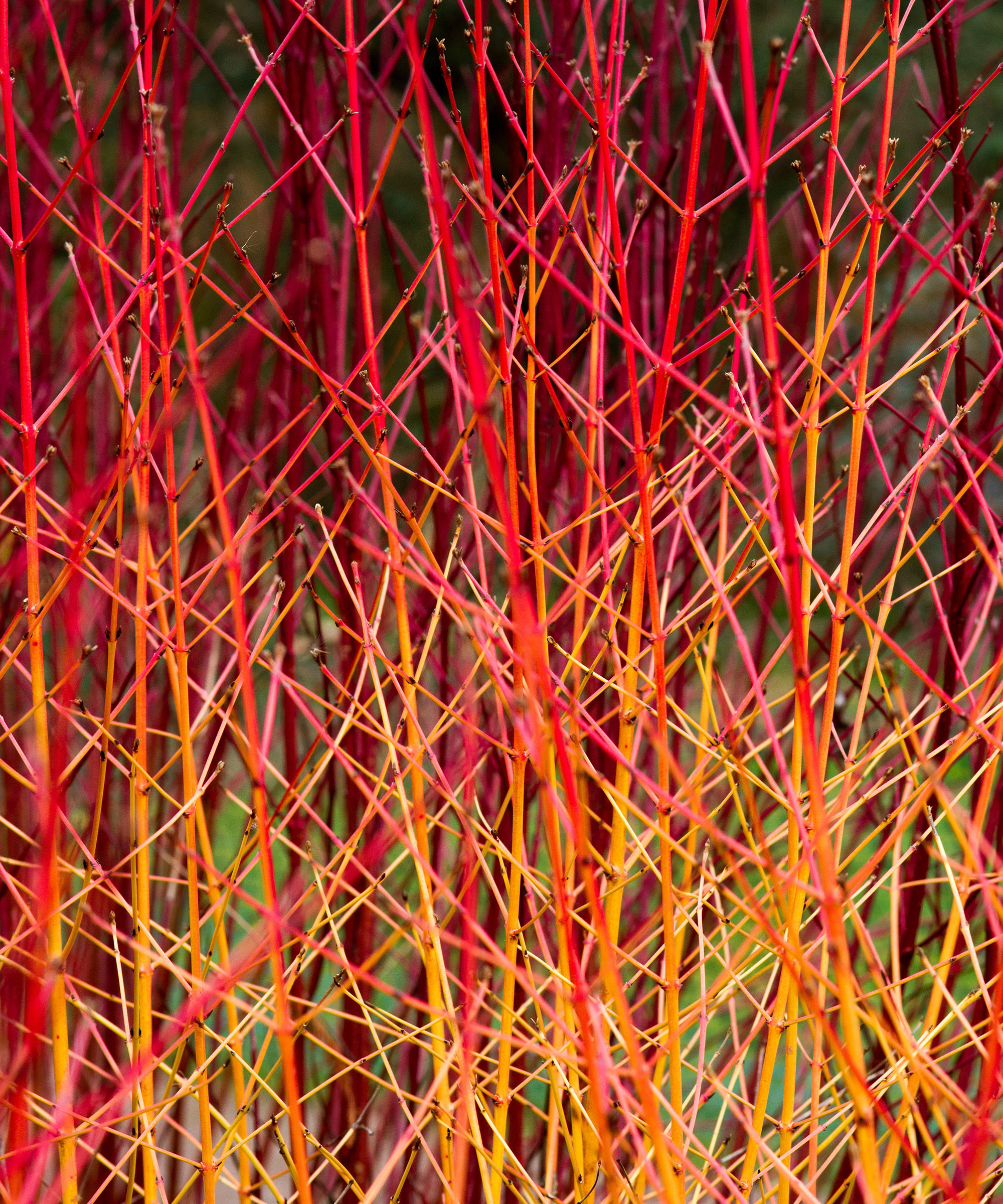
Red twig dogwoods, Cornus sericea, are mainly grown for their attractive foliage and bright red stems, which come into their own in winter.
The shrubs are deer resistant plants, but if deer do try to eat them, the good news is that red twig dogwoods are fast growing and tolerate harsh pruning, meaning they will easily spring back.
They are adaptable to a number of environmental conditions. You can grow them in full sun or up to 50 per cent shade. Bear in mind that red twig dogwoods can become large over time, but maintaining their size is simple. These can be pruned any time of the year and can be transplanted quite easily.
Grow them in USDA zones 3-8, and also consider other types of dogwoods that can be used, which range from medium shrubs to small trees.
7. Witch hazel
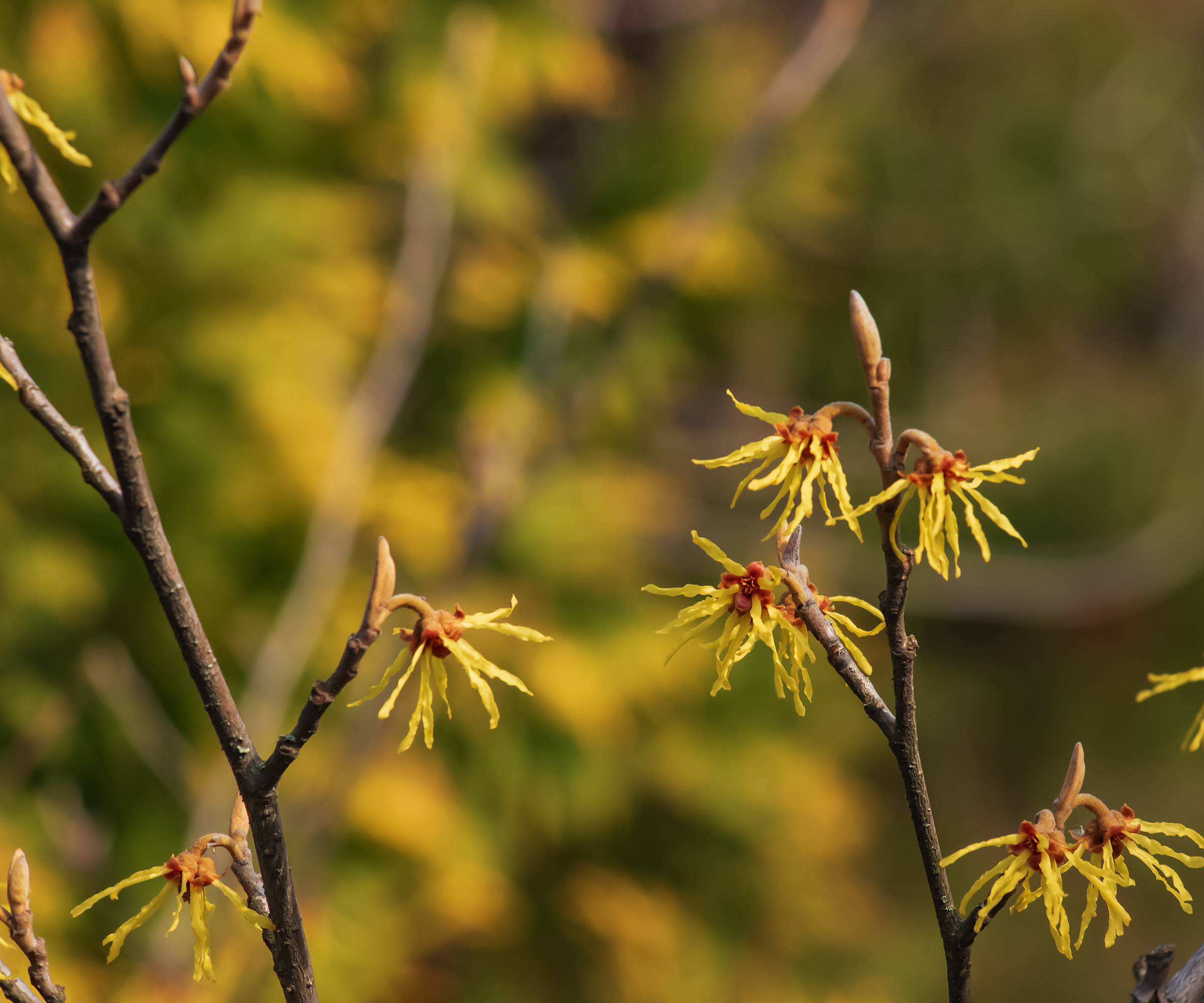
Once it has had a few years to establish, deer will usually leave witch hazel alone. They don't like anything with herbal properties, plus it's beautiful yellow flowers have a strong scent, which can repel deer.
Hamamelis varieties are fairly low maintenance to grow, and it's stunning winter blooms mean it will provide some welcome color in the garden when not a lot else is in flower.
It is exceptionally winter hardy, to USDA zone 3.
Deer resistant perennials
There are many deer resistant perennials available that will make a beautiful feature in your borders. When thinking about perennial flowers, remember that deer hate strong scents as well as spiky or fuzzy textures. They would ignore echinops, for instance, with it's spiky globe-shaped blooms. Here are five more perennials that deer will avoid.
1. Buddleia
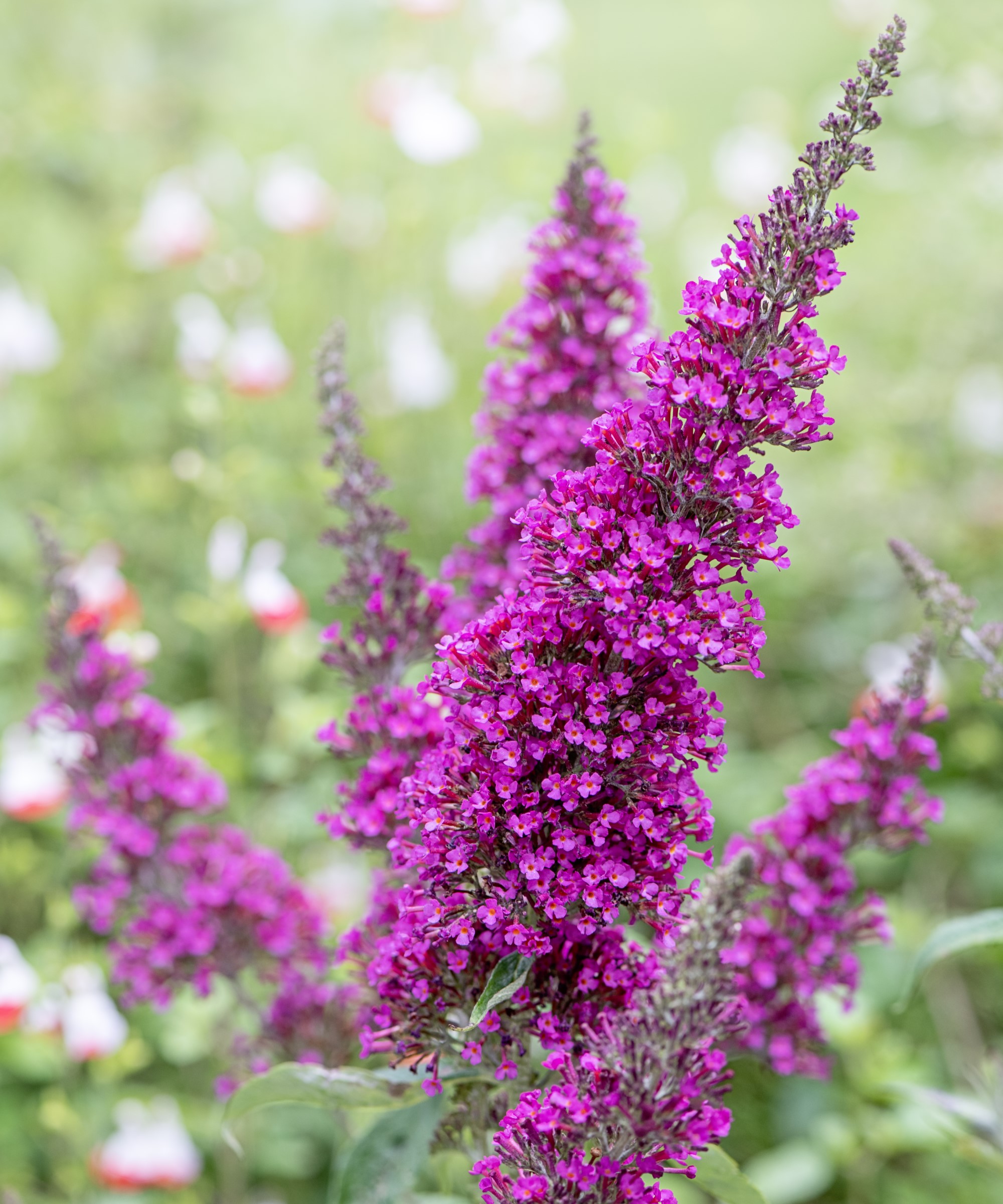
Also known as butterfly bushes for being highly attractive to these precious pollinators, Buddleia is not appealing to deer. Though shrubs, buddleia behave more like woody perennials, as in colder areas they dye back almost to the ground each winter and regrow their full size through the season.
If the plant doesn’t completely die back, it’s a good idea to cut it right back anyway. They grow quickly as they come back up and can reach 6-7 foot tall in a single season. The flowers can be white, blue, cranberry, purple, lavender, and pink. You can find the indigo 'royal razz' buddleia variety at Walmart.
Buddleia require full sun in order to thrive, and can be grown in USDA zones 4-10, depending on the variety. As it grows so fast, ensure you know how to prune buddleia to keep it under control and looking its best.
2. Purple coneflower
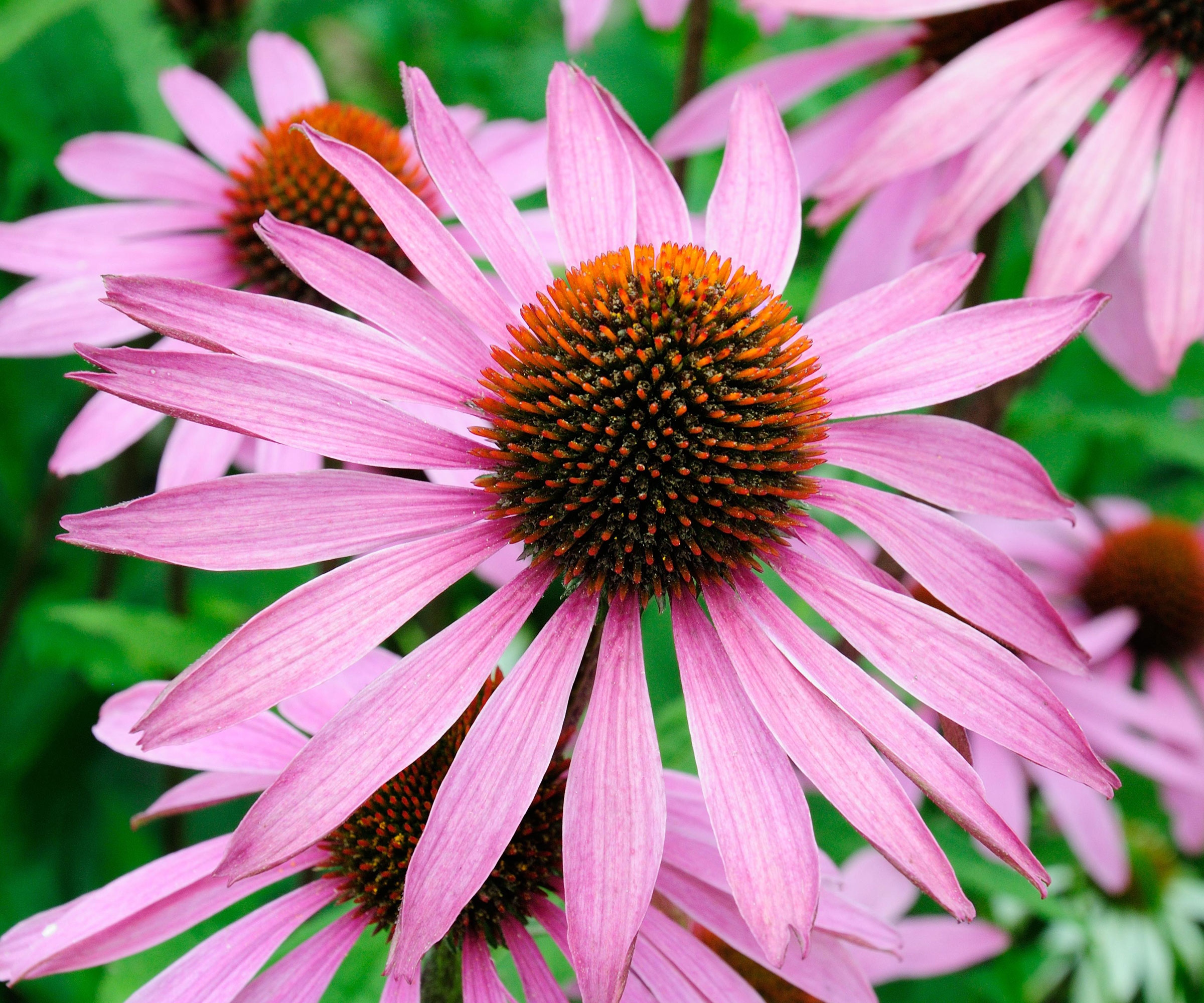
Also known as Echinacea, purple coneflower is a popular plant among pollinators – but its fragrance and spiny center make it unappealing to deer.
‘A native perennial, purple coneflower prefers moist, well-drained soils but is drought tolerant once established,’ says Millie Davenport, director of the Clemson Extension Home and Garden Information Center.
The plants die back to the ground over winter, and can grow up to 4 feet tall in the growing season. ‘Not only a great nectar source for pollinating insects, birds also enjoy the seedheads of purple coneflower in the fall,’ adds Davenport.
You should be able to grow purple coneflower in USDA zones 3-9.
3. Bearded iris
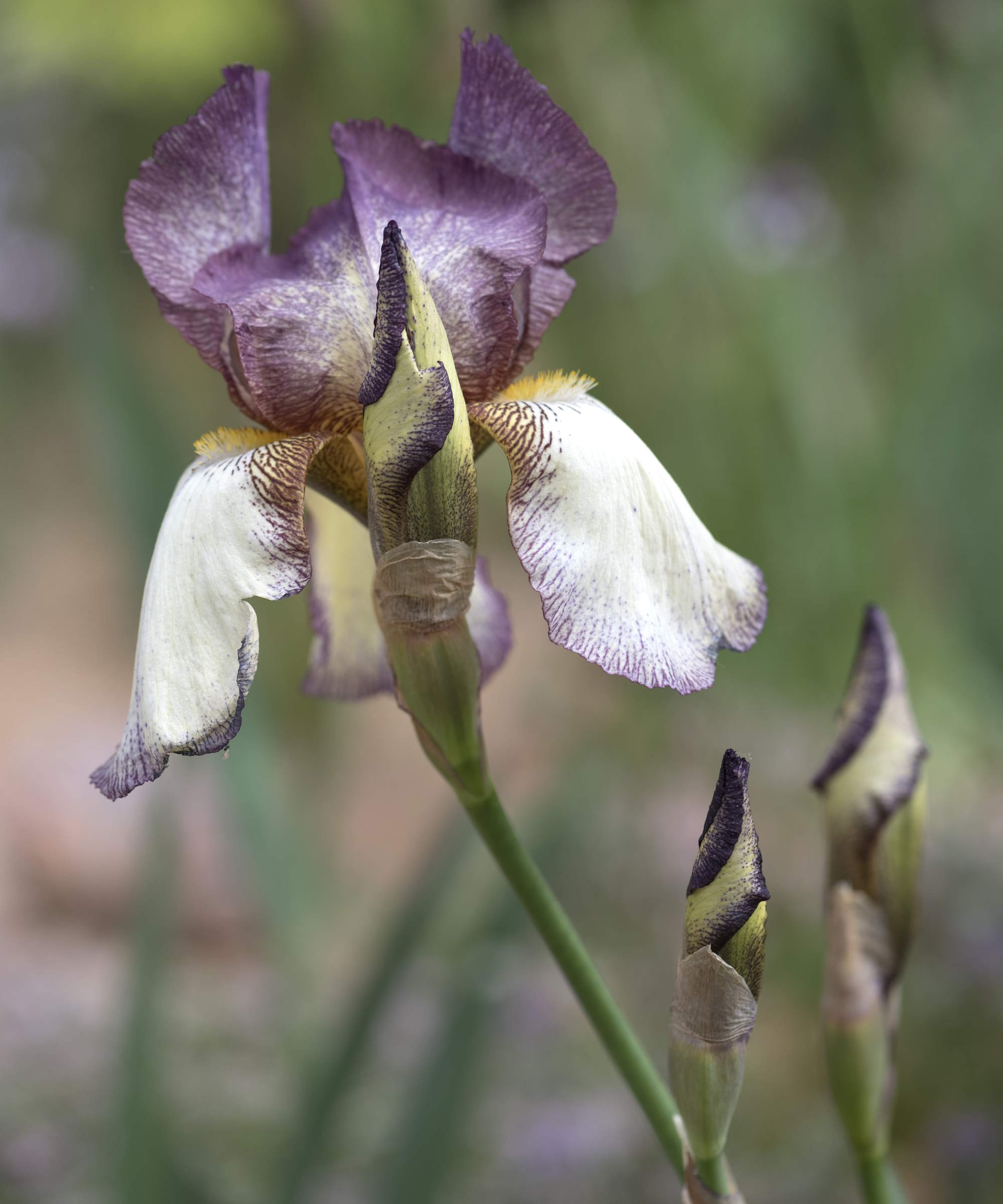
The scent, texture and taste of bearded iris is unpalatable to deer, but its exotic-looking blooms are a beautiful addition to the spring and summer garden.
‘Some varieties, such as Immortality, rebloom in late summer and early fall,’ says Jo Ellen Meyers-Sharp. ‘Each flower can be one color or it can have two or more colors.’
You can grow bearded iris in a sunny spot in well-draining soil, in USDA zones 3-9. You can learn how to grow irises properly to make sure they flower.
‘Cut back the leaves in the fall,’ adds Meyers-Sharp. ‘When planting, make sure the rhizome is right at, or slightly above the soil surface. If planted too deep, the iris will not bloom.’

Jo Ellen is a gardening writer, author and speaker. She blogs at hoosiergardener.com. She was the founding editor of Iowa Gardener, Michigan Gardening and Minnesota Gardener, and until recently edited those and Wisconsin Gardening magazines. She’s a popular speaker about garden-related topics and sustainable living, and is a member of Great Garden Speakers, She also works as a garden coach, helping clients learn about their landscapes.
4. Baptisia
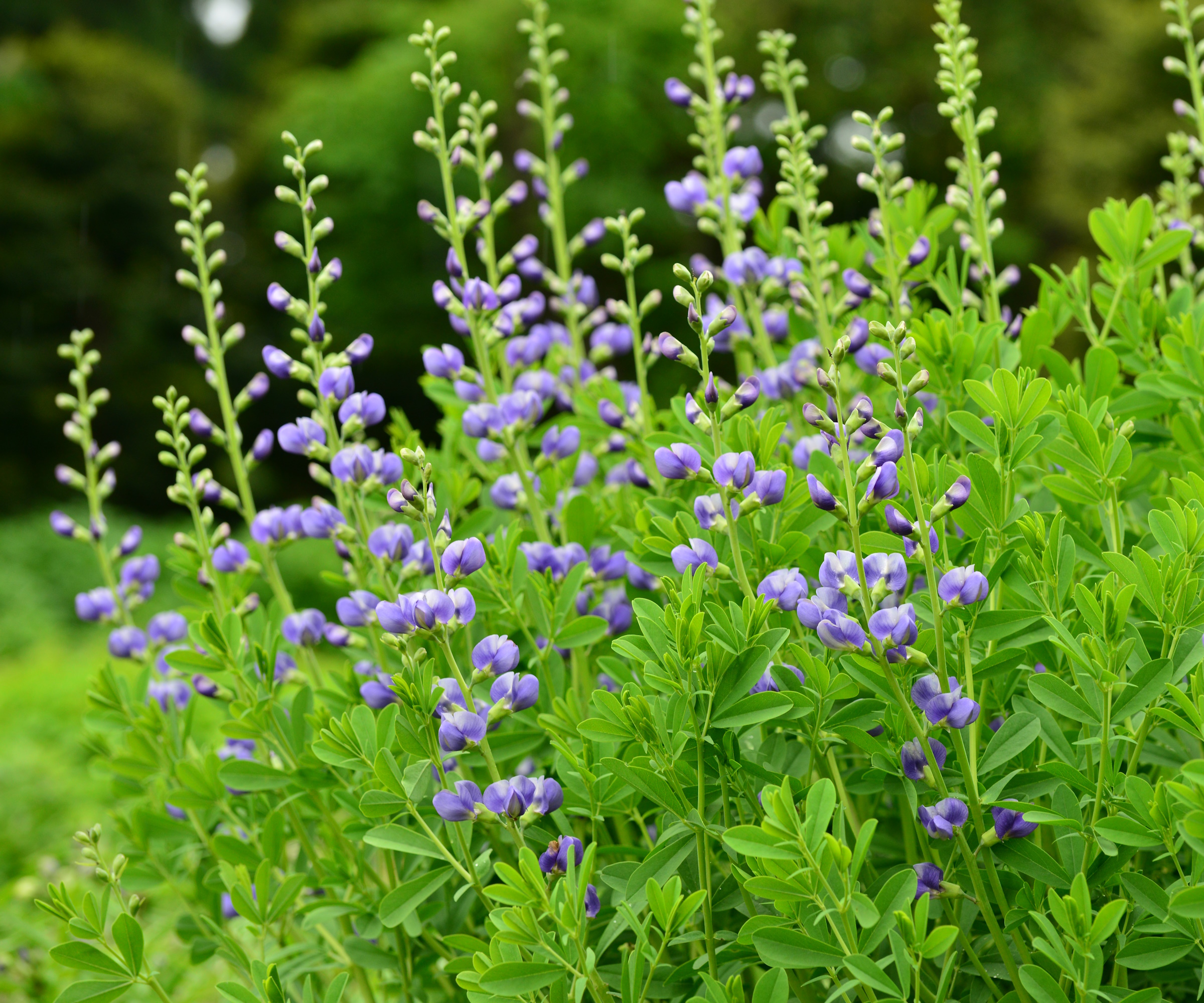
'Baptista – or false indigo – is a perennial herb native to much of central and eastern North America, and is a great deer resistant plant,’ says Millie Davenport. In general, deer do not like herbs or anything overly scented.
It prefers moist, well-drained soil but is drought tolerant once established. You should be able to grow it in USDA zones 5-9.
‘Though disliked by deer, it is a host plant for the larvae of several butterfly species, including orange sulphur, clouded sulphur, frosted elfin, eastern tailed blue, hoary edge, and wild indigo duskywing,’ adds Davenport.
5. Lady's mantle
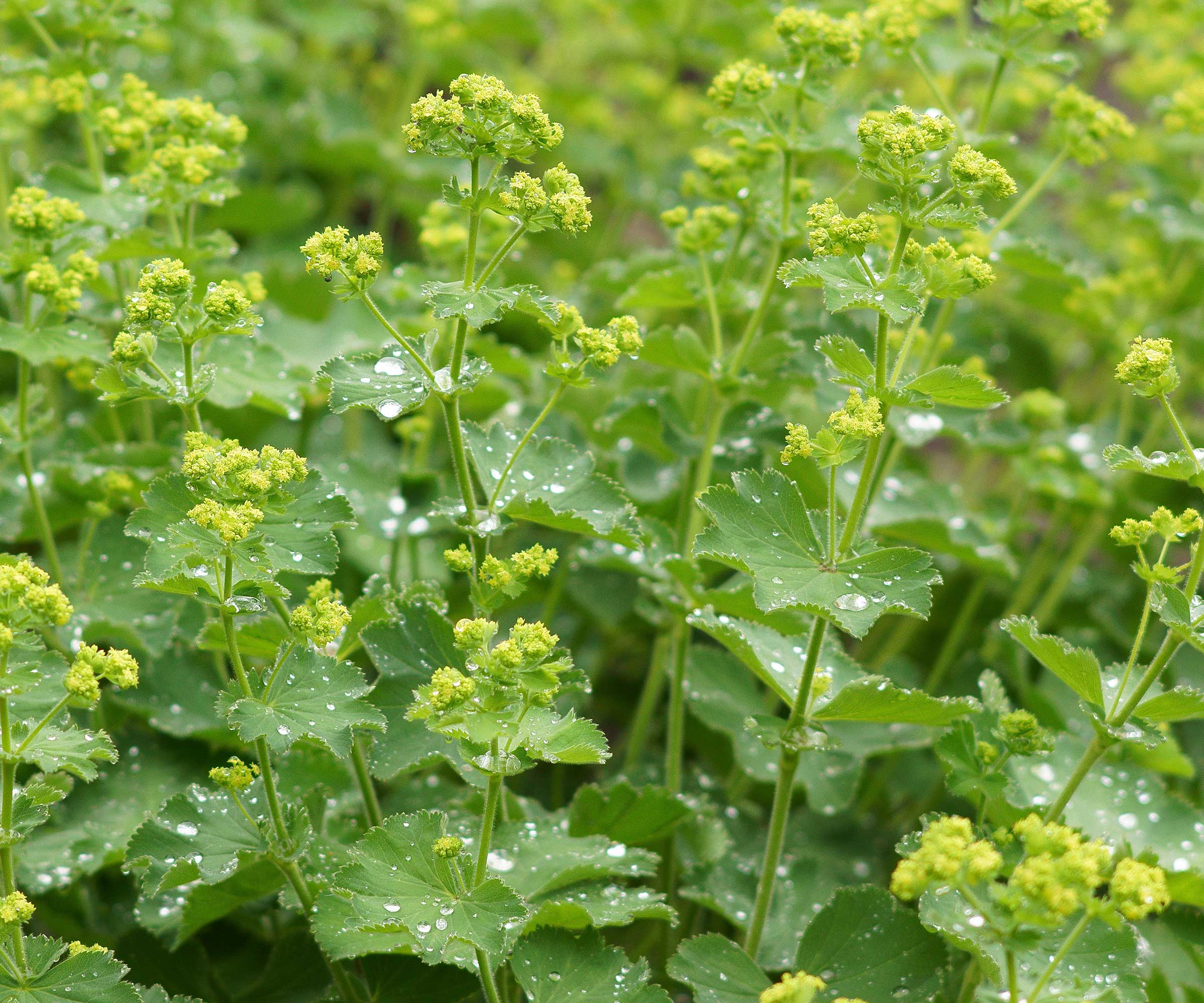
Lady's mantle, also known as Alchemilla mollis, is an absolute backyard favorite, and its habit of self seeding makes it a great ground cover plant in US hardiness zones 3-9.
Deer do not like the soft, fuzzy texture of the leaves, and will leave the plants well alone. The attractive, scalloped leaves are covered with tiny hairs, making them very soft to the touch, but will repel deer.
Tall, lime green flowers froth over the foliage from late May and throughout the summer. You can find lady's mantle available at Natural Hills.
6. Russian sage
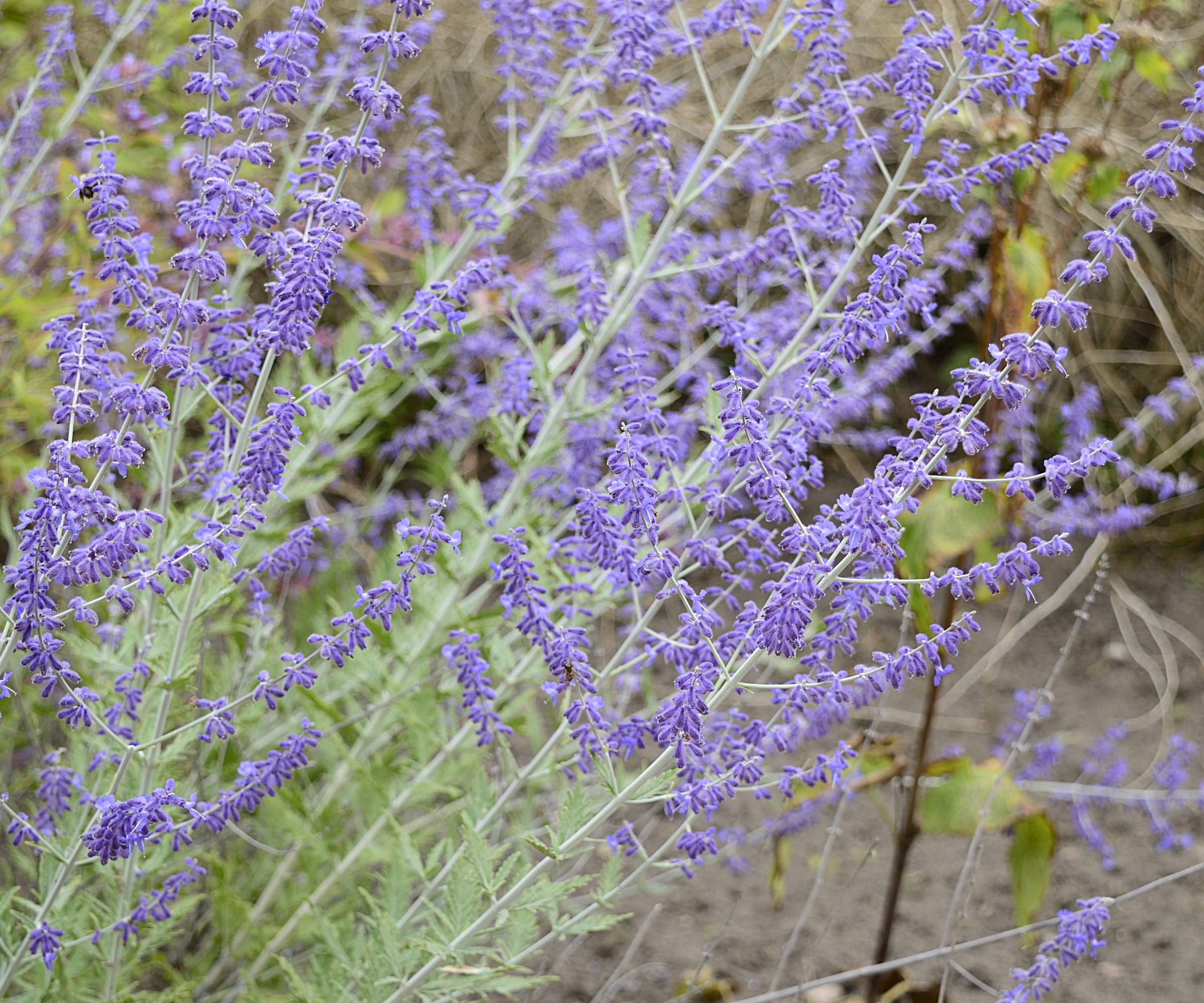
This perennial herb is highly drought-tolerant and deer to not like to nibble on it owing to its scent and taste. It produces a heady menthol fragrance, often described as a mixture of lavender and sage, which deer will stay away from.
Russain sage, or Perovskia atriplicifolia, produces glorious spires of lilac-purple flowers on pale, minty foliage which bees and other pollinators will love.
It will thrive in USDA hardiness zones 4-9.
Deer resistant annuals
Don't forget annuals when choosing deer resistant plants for your garden – these are ideal for filling in gaps and many have a long flowering season. Choose scented deer-resistant spring bulbs to ensure they stay safe from hungry deer.
1. Cosmos
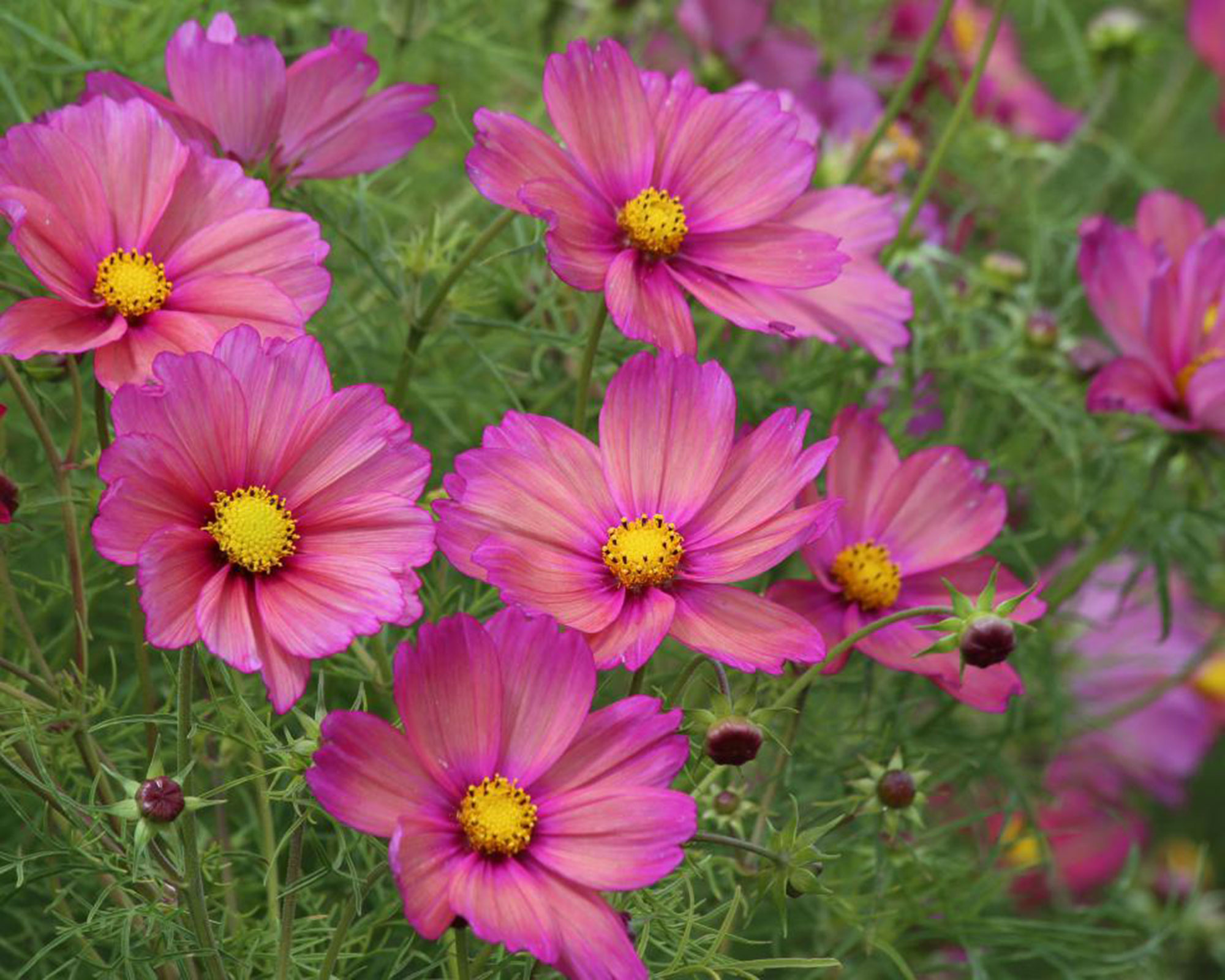
Not only are cosmos deer resistant plants, but they are beloved of pollinators, make great cut flowers, and fill out summer borders wonderfully. Deer do not like the taste of their leaves, or the natural sap within the flower heads, making them a wonderfully natural deer repellent.
‘Cosmos are beautiful airy plants that thrive in full sun, although they’re fine with some shade too,’ says Teri Knight, radio show presenter, and founder of the Garden Bite podcast and website. ‘They are easy to grow handling hot, dry conditions, and you can grow them from seed or potted plants.’ They can be grown in most hardiness zones, from 2 - 11.
It’s so easy to learn how to grow cosmos as an annual in most climates, and they make such an impact in the garden. Choose from dazzling pinks through buttercup yellow and purest white. It's useful to know when to plant cosmos seeds and get the timing right for the best summer flowers.

Teri Knight became a Master Gardener with Dakota County, Minnesota in 2003. She currently produces her website, gardenbite.com, that supplements her daily radio program which has aired Monday - Friday on radio stations throughout Minnesota since 2007. She also hosts a gardening podcast.
2. Flowering tobacco
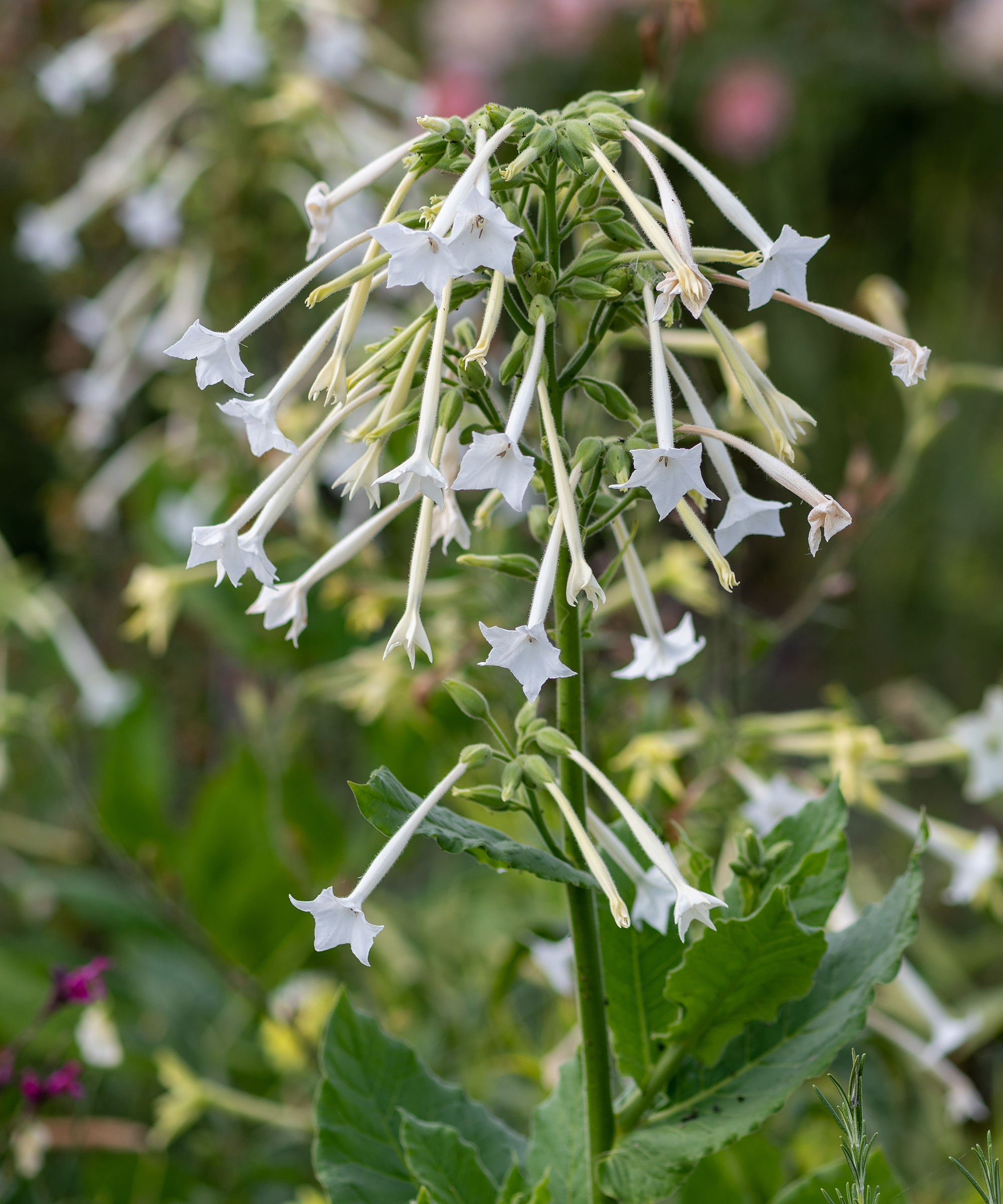
‘Flowering tobacco – or Nicotiana alata – has wonderfully fragrant flowers, especially at night, so plant in a sunny area where you can enjoy the perfume,’ says Jo Ellen Meyers-Sharp.
However, deer won’t enjoy their heavenly fragrance quite so much, which makes them a great deer resistant plant.
‘Hummingbirds, hummingbird moths and other night pollinators also visit these native plants,’ she adds. ‘Nicotiana sylvestris, or woodland flowering tobacco, tolerates shade and is also fragrant.’ As old-fashioned plants, flowering tobacco are also a great addition to your cottage garden ideas, working well in borders and containers. USDA hardiness zones 6-11, depending on the species.
3. Dusty miller
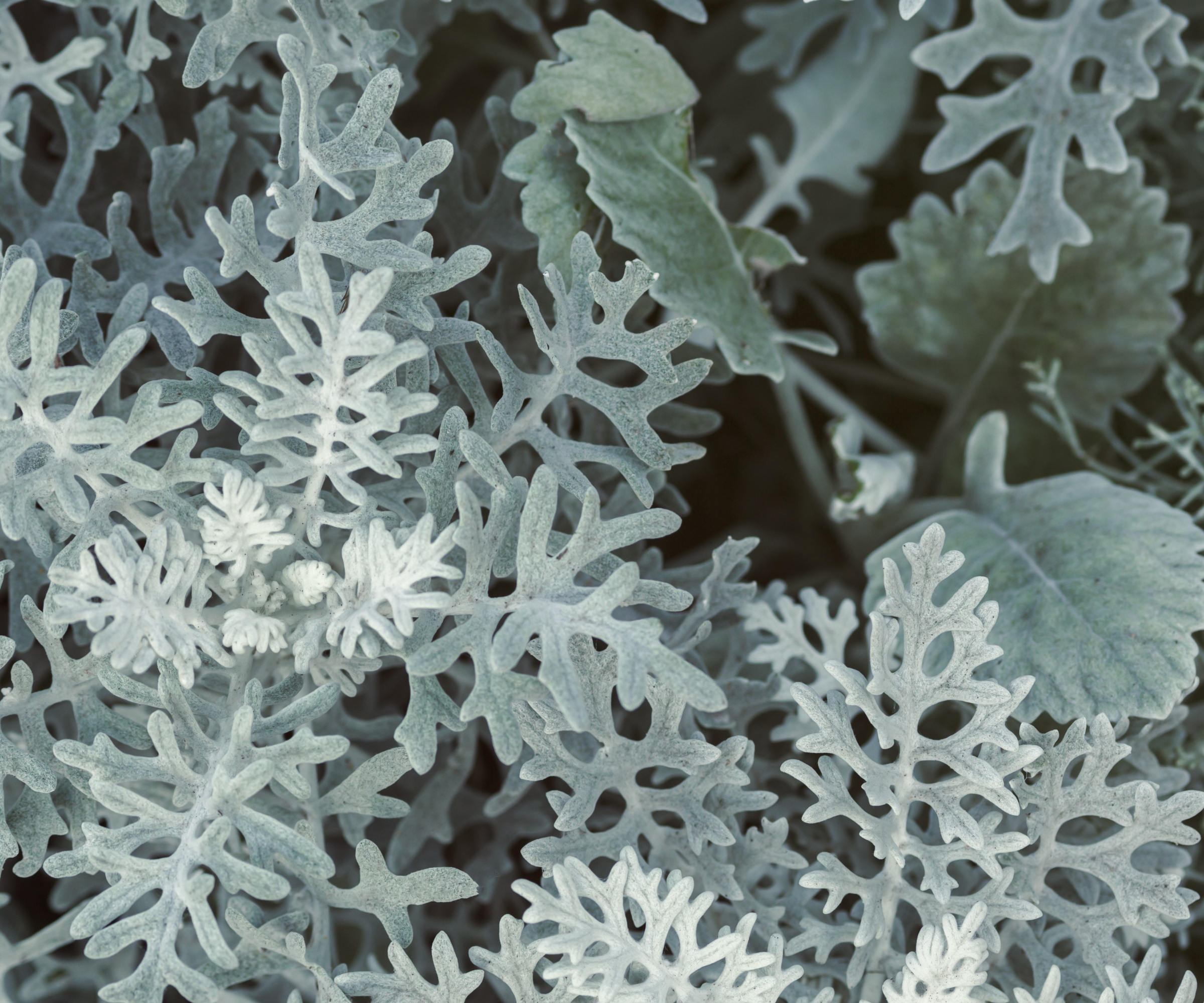
Though technically a herbaceous perennial, dusty miller – or Senecio cineraria – is usually grown as an annual, and is prized for its silvery grey foliage that acts as the perfect foil for nearby flowers. It has a soft, fuzzy texture to its leaves, which is lovely for us to touch, but will not become a meal for deer.
‘Dusty miller is such a fantastic silver plant that will highlight the colors of other plants,’ says Teri Knight.
It’s adaptable to various soil types, and can cope well with drought-like conditions. Being a Mediterranean plant, it does like full sun, so don’t plant it in the shade. USDA hardiness zones 7-10.
4. Lantana
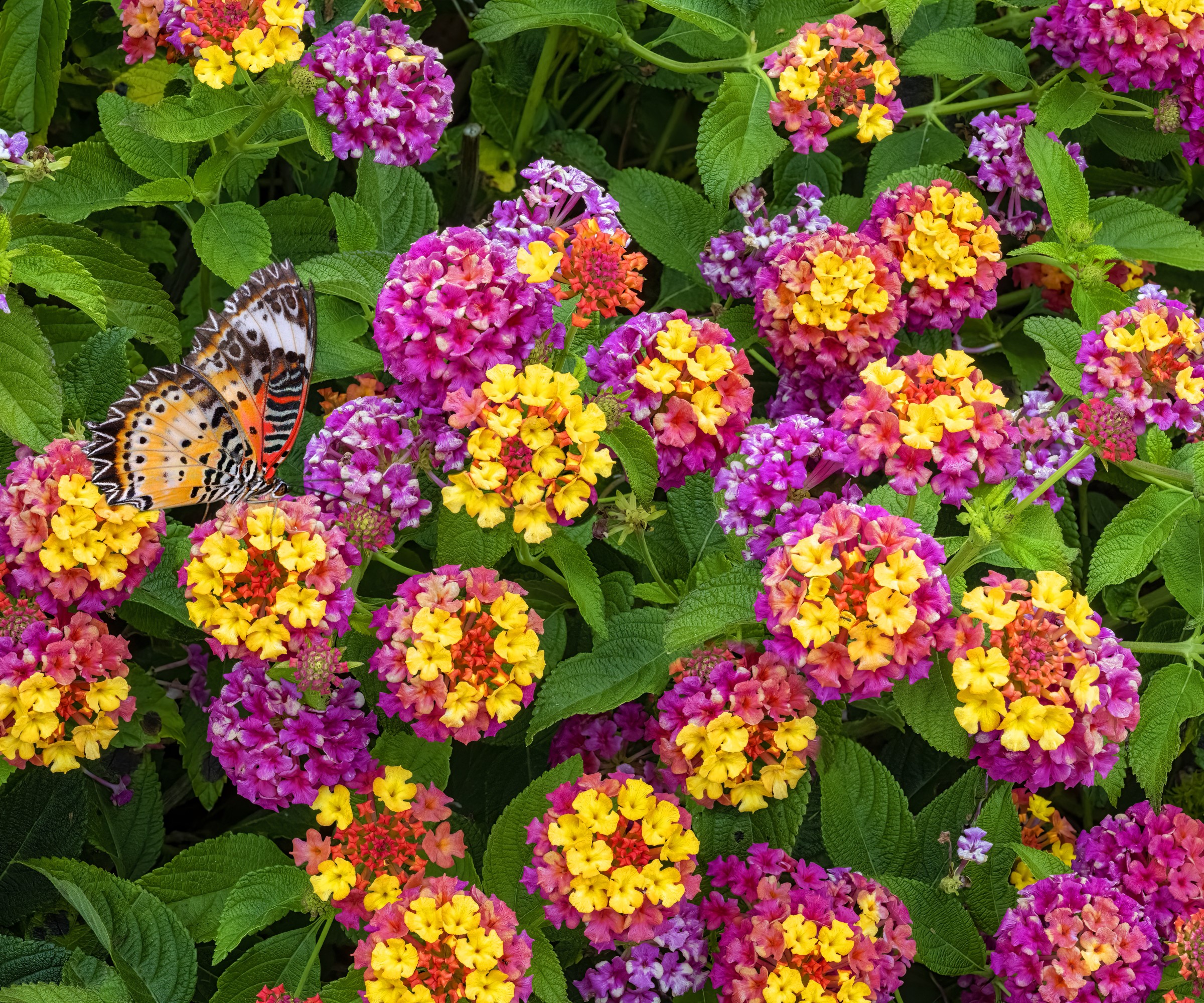
Lantana is another perennial that is grown as a summer annual. ‘If you live in the south and south-west, you may find it to be winter hardy,’ says Jo Ellen Meyers-Sharp.
Due to the flowers’ strong fragrance and the plant’s rough texture, lantana is usually avoided by deer. However, it is a magnet for pollinators and hummingbirds.
‘Lantana can take about as much heat and sun as you want to give it. It’s also fairly drought tolerant,’ adds Meyers-Sharp.
It’s ideal for adding to colorful borders and also grows beautifully in containers. USDA hardiness zones 8-11.
Deer resistant plants for shade
'It’s fairly easy to find deer resistant plants that love the sun, but shade plants can be tricky,' says Teri Knight. Luckily there are a few great choices to add to shady spots in the garden.
1. Bleeding heart
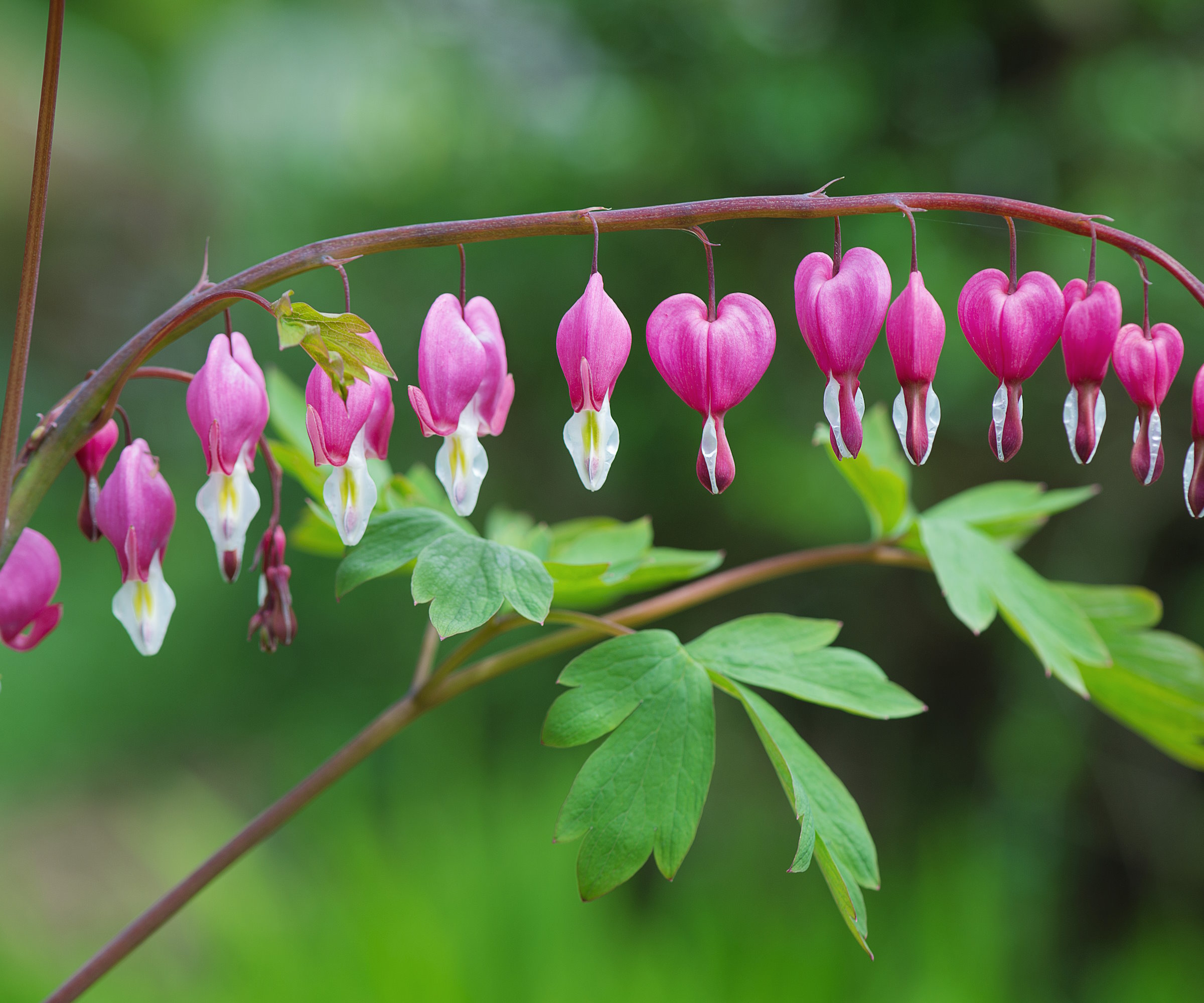
Also known as Dicentra spectabilis, and by it's new classification Lamprocapnos spectabilis, bleeding heart is a shade-tolerant herbaceous perennial named for its heart-shaped flowers that is repellent to deer.
Native to woodlands, it pops up in borders in the spring giving much-needed color, before dying back just in time for the summer showstoppers to take its place.
‘Bleeding heart is an old-fashioned plant with plenty of appeal to last,’ says Knight. ‘There are many cultivars now including ‘Golden Hearts Bleeding’ with its chartreuse leaves.
‘Growing to a compact 2ft x 2ft, this beauty tucked in around your hostas just might be able to give them some protection.’ You can grow bleeding heart in USDA zones 3-9.
2. Ferns
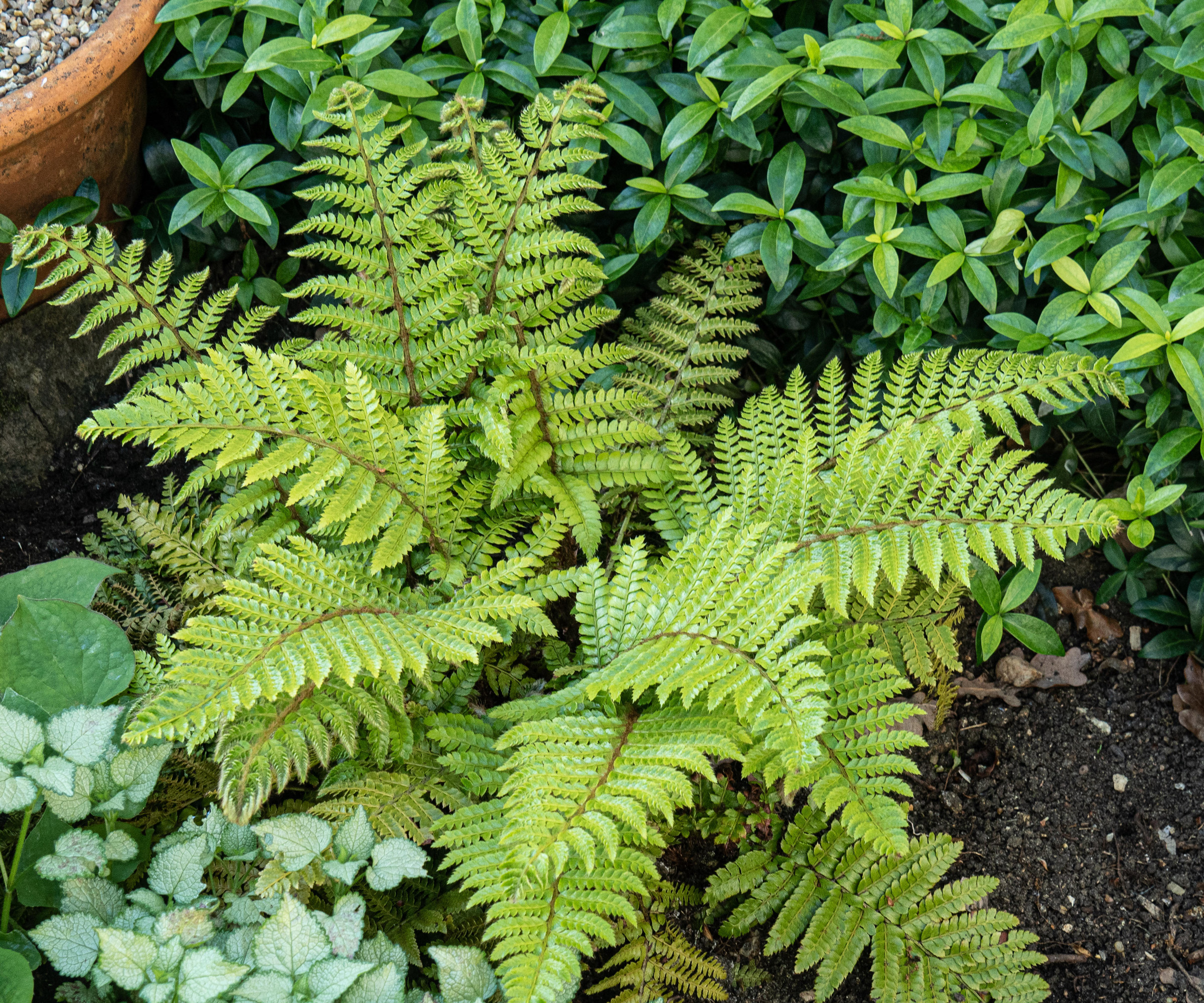
Lush leafy ferns tend to be overlooked by deer, as they do not enjoy the texture of the leaves and hairy stems, but they make a lovely textural addition to a shade garden.
‘I particularly like autumn fern, Christmas fern and Japanese painted fern – their height reaches anything from 10-36 inches tall,’ says Millie Davenport. ‘Ferns prefer moist, well-drained soil high in organic matter.’
Their hardiness is dependent on the variety, but you should be able to find ferns to grow in as low as zone 2.
3. Hellebores
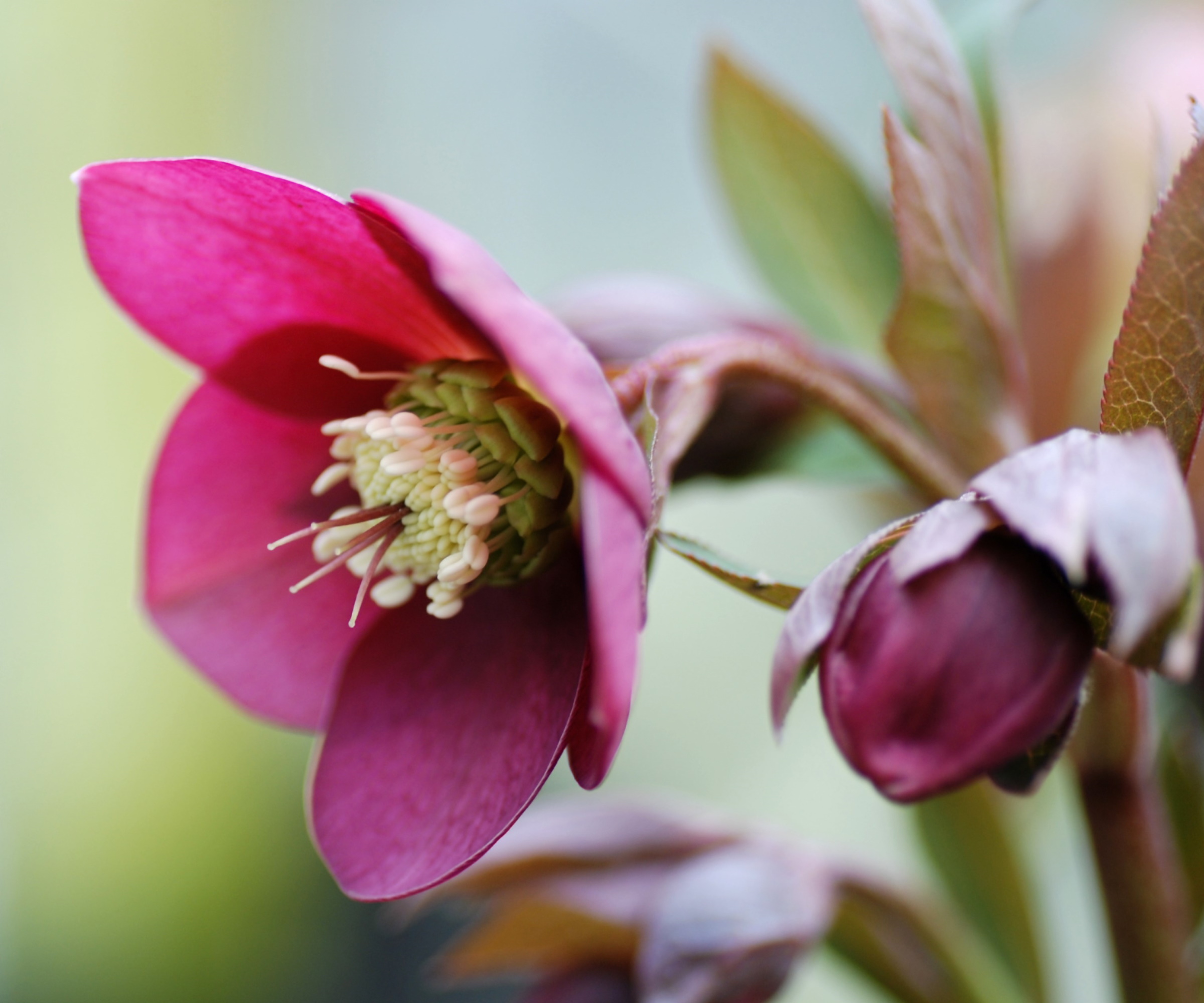
As well as offering winter interest to gardens, hellebores are also deer resistant as they are highly toxic plants. Evergreen plants with jewel-colored flowers, they will tolerate dry shade.
‘Depending on the variety, hellebores bloom from early winter into June, and they even bloom in snow,’ says Jo Ellen Meyers-Sharp.
It’s easy to learn how to grow hellebores , with varieties suitable for USDA zones 3-9.
‘A lot of gardeners trim off the winter-damaged leaves in spring as the plants begin to bloom, but it’s not necessary,’ she adds.
FAQs
What plants do deer hate the most?
According to research carried out by the University of Georgia Extension, deer generally dislike plants with aromatic foliage, such as rosemary and sage. They also avoid statuesque plants such as yews, hollies, and boxwoods. Anything spiny or fuzzy will also be unpalatable to deer.
What plants do deer eat the most?
Deer tend to adapt well to their local habitat and enjoy many of the plants that are grown there. They particularly enjoy eating tulips and hostas. In rural areas, they tend to browse crops such as soybeans, grains, vegetables and fruits. However, the bottom line is that no plant is deer-proof. They prefer some plants over others, but they will eat what is available when they have no other choice.
For many, it's about finding a compromise between a garden that is safe and attractive for wildlife, and protecting precious trees and shrubs from being eaten. With some careful planning and understanding about your native plants and wildlife, it is possible to find the perfect balance.
Sign up to the Homes & Gardens newsletter
Design expertise in your inbox – from inspiring decorating ideas and beautiful celebrity homes to practical gardening advice and shopping round-ups.

Melanie has worked in homes and gardens media for two decades. Having previously served as Editor on Period Living magazine, and worked on Homes & Gardens, Gardening Etc, Real Homes, and Homebuilding & Renovating, she is now focusing on her passion for gardening as a Senior Editor at Gardening Know How. As a keen home grower, Melanie has experimented with pretty much every type of vegetable at some point – with mixed results. Often it is the simplest things that elude you, which may explain why she just can't seem to master zucchinis.
- Rachel BullHead of Gardens
-
 Zooey Deschanel and Jonathan Scott's breakfast nook is an innovative, effective use of kitchen space – it turns a 'dead area' into a cafe-style corner
Zooey Deschanel and Jonathan Scott's breakfast nook is an innovative, effective use of kitchen space – it turns a 'dead area' into a cafe-style cornerJonathan and Zooey have situated an eccentric yet elegant dining area in what may have been an otherwise underused corner
By Hannah Ziegler Published
-
 6 things you should never throw in the trash – and what to do for safe disposal instead
6 things you should never throw in the trash – and what to do for safe disposal insteadFrom batteries to space heaters, experts reveal what not to throw
By Andy van Terheyden Published